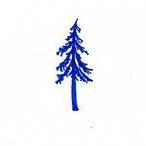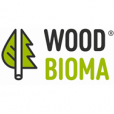
Until recently I hadn’t given much attention to the large Ganoderma brackets that adorn some of the trees of my local site, Hampstead Heath. I had assumed that they were all most likely to be Ganoderma australe, the Southern Bracket.
At the beginning of 2016 I was asked by David Humphries, Trees Management Officer of Hampstead Heath, whether I would take a look at a collection he and a colleague had made from Quercus ilex, Holm Oak, in nearby Totteridge. He believed that it might have been G. applanatum, commonly known as Artist’s Conk or Artist’s Bracket.
However, this and subsequent collections, once the spores had been measured, all turned out to be G. australe. This exercise spurred my curiosity about G. applanatum; how common was it in Southern England, did it occur on Hampstead Heath? I certainly hadn’t recorded it in 20 years of recording on the Heath. How could others, and I, tell it apart from G. australe in the field?
I was able to investigate the spore size, when looking at G. australe specimens, by using my available literature but I didn’t have actual G. applanatum spores to compare my G. australe spores against; with a case like this it is always preferable if possible. I was subsequently able to compare spores from a confirmed collection of G. applanatum from elsewhere.
In addition to recent works on the polypores of Europe by authors such as Ryvarden & Melo (2014) and Bernicchia (2005), an article by Ann Leonard (1998), specifically compares the two species, both morphologically and microscopi- cally.
Morphology and Habitat
In the field G. applanatum and G. australe can and often do look identical, with brown, knobbly upper surfaces, white obtuse to narrowed margins, and a white pore surface with very small pores that bruise dark brown (Figs 1 & 2). Both species occur on a variety of broadleaved deciduous trees, including oak, beech, birch, willow, poplar, plane and lime, occurring in woodland, parkland, gardens and cemeteries (Ryvarden & Melo, 2014).


Ryvarden & Melo state that G. applanatum is primarily a saprotroph, rarely parasitic and then growing at the base of numerous genera of hardwoods, whilst G. australe can be found on both dead and living trees, which might suggest that it can be both parasitic and saprophytic which would concur with my observations of G. australe. Both cause a mottled white root and butt rot of living and dead hardwoods. Interestingly the comment regarding G. applanatum being primarily saprotrophic is not included in Ryvarden & Gilbertson’s 1993 Vol. 1 publication European Polypores and the source for these statements is not mentioned. This information, if correct, would be important when assessing the management of infected trees. If the ecologies of each Ganoderma species really do differ, this would need to be taken into account deciding on treatment of a particular tree.
David Humphries states that, “no one really talks specifically about how to manage trees with separate colonisations of Ganoderma australe and Ganoderma applanatum but there are some articles and written experiments worth taking note of, that discuss the different ways in which these two species affect the wood of living trees”.
The following are a few statements from some articles and written up experiments:
• Guy Watson, Ted Green and Dr David Lonsdale (2011), remark in the Arboricultural Association’s Fungi on Trees guide that G. australe has the ability to penetrate otherwise sound sapwood, whereas G. applanatum is mainly confined to already damaged wood.
• G. australe is a weak parasite, whilst G. applanatum is principally a true saprotroph on old, already dead stumps, Heinz Butin (2002).
• Under controlled conditions, Schwarze & Ferner (2003), assessed the relative abilities of G. australe, G. applanatum and G. resinaceum to overcome the reaction zone* (R-Zone) within Platanus x acerifolia, London Plane. They found that G. australe was able to breach the R-Zone and colonize new sapwood, whilst G. applanatum was unable to do so unless the R-Zone had already been breached via prior drilling.




So, there seems to be some consensus among those working with trees that G. australe is the more aggressive and ‘parasitic’ of the two species and G. applanatum the more saprotrophic.
The Consistent Differences
Even though these two species look very similar there are distinguishing features one can look for when examining them in the field.
One is the thickness of the cuticle or crust of the upper surface. In G. applanatum the thickest part of the crust is less than 0.75mm thick, whilst in G. australe the thickest part is more than 0.75mm. As a result, the upper surface of G. applanatum is softer and depressable with a thumb or finger whilst G. australe is much harder and has no give. This should be tried on fruitbodies appearing to be at least two years old and upward but not applied to old fruitbodies with crumbling cuticles.
This age threshold should also be applied when observing and comparing the context of the two species, i.e. the thickness of flesh layer between each season’s tube growth. In G. applanatum a distinct band of flesh occurs between the tubes, which can be up to 13.5mm thick but varies with age (Fig. 3), whilst in G. australe there is merely a thin stratification between the tube growths, without any substantial contextual layers (Fig. 4).

Once the above criteria have been assessed, the spores need to be measured. When collecting spores for measurement, either scrape them from the upper surface or collect a leaf or twig from around or beneath where the brackets are growing. I find this the most efficient source for obtaining plenty of mature spores.
Ganoderma spores have an outer transparent layer known as the exospore, which often breaks off (see Figs 5 & 6). For a consistent, reliable measurement it is best to measure only the darker boundary of the inner spore. From personal study the following are my spore measurements of both species. The measurements in brackets are the minimum and maximum sizes found by Ann Leonard in her examination of the spores of 65 specimens from Britain and Denmark. (Leonard, 1998). Some of the difference between our measurements is explained by Leonard also including part of the exospore wall in her measurements.
• Ganoderma applanatum spores were 5.8–7.0 (9.0) x 4.5–5.2(6.0) μm.
• Ganoderma australe spores were (8.0) 9.0–10.0 (13.0) x (5.0) 6.2–7.1 ( 8.5) μm.
This shows a consistent and substantial difference in length and width between the spores of the two species. However, it has to be noted that where G. applanatum spores reach their maximum size and G. australe spores their minimum size, there is an overlap. But even so, when enough spores are measured, a size pattern emerges and one can be sure of an identification
Inconsistent Differences
 • The fruitbody margin of both species can be obtuse to narrowed but is more often narrower in G. applanatum.
• The fruitbody margin of both species can be obtuse to narrowed but is more often narrower in G. applanatum.
• G. applanatum can be infected by Agathomyia wankowiczii, a yellow-orange fly that causes distinct, nipple-like galls to form on the pore surface, but they are not always present (Figs 7 & 8).
•The flesh colour can also differ between the two species, often having golden tints just below the cap cuticle in G. applanatum but as they both have a range of shades they pass through as they age it is not such a reliable feature.
Results and Conclusion
Following the discussions with Humphries, we both set about seeing whether G. applanatum actually occurred on Hampstead Heath. As expected G. australe was quite abundant; in one morning we collected small samples and spores from 12 specimens, from across the heath, off different trees. Applying the criteria given here, each collection was confirmed as G. australe.
NOTE: For identification purposes, there is no need to collect the whole fruitbody; a small sliver from the fruitbody and/or spores collected from debris or from the upper crust will suffice for identification.
And then one afternoon, during a routine dog walk across the Heath, I decided I would press the tops of each Ganoderma I saw during the walk. All were rock hard, apart from one large fruiting of rather small brackets, mixed with some older, larger specimens, on a fallen, dead birch tree (back cover). To my surprise and excitement, each and every one had a soft top, giving way when I pressed down with my thumb.
I felt the underside of one of the larger specimens and felt some hard, cone-like lumps, and on closer inspection I could see that these were galls caused by Agathomyia wankowiczii.
Next I measured the spores and they all turned out to be consistently smaller than the minimum size of G. australe; I had found my first bonafide Ganoderma applanatum! It seems clear that this is by far the least common of the two species in Middlesex and quite likely most of Southern England.
So I would suggest that when assessing finds of Ganoderma in the field you first apply the thumb test for a soft top, then look for fly galls on the pore surface, before collecting a spore deposit and measuring the spores. It is also worth taking note of the habitat and substrate: living or dead trees, fallen or standing and the tree species.
G. applanatum is also known to occur on conifer trees and of the 2776 records (inc. duplicates) on the FRDBI there are a number from conifers, including Yew. Of the 5380 (twice as many as G. applanatum) records (inc. duplicates) of G. australe on the FRDBI, at a quick glance there appear to be none from conifers.
Of the 25 records of G. applanatum for Middlesex, including duplicates and misidentifications, there are none from Hampstead Heath, making this the first record for the site.
Acknowledgement
My thanks to Dr Martyn Ainsworth and the other editors of Field Mycology for their invaluable advice and comments during the writing of this paper.
References
Bernicchia A, (2005). Fungi Europaei, Vol.10: Polyporaceae s.l. – Edizioni Candusso.
Breitenbach, J. & Kranzlin, F. (1986) Fungi of Switzerland Vol. 2. Lucerne, Verlag Mykologia.
Butin, H. (2002). Tree diseases and disorders. Oxford University Press (reprint).
Green, T., Lonsdale, D. & Watson, G. (2011). Fungi On Trees. An Arboricultural Association Guide.
Leonard, A. (1998). Two Ganoderma species compared - The Mycologist Vol 12 - pt 2: 65–68. British Mycological Society.
Ryvarden, L. & Gilbertson R. L. (1993). European Polypores, Fungiflora, Oslo.
Ryvarden L. & Melo, I. (2014). Poroid fungi of Europe. Synopsis Fungorum 13. Fungiflora, Oslo.
Schwarze, F.W.M.R. & Ferner, D. (2003). Ganoderma on trees – Differentiation of species and studies of invasiveness. Arboricultural Journal. 27 (1): 59–77.
Report Article


.thumb.jpg.4a8e2360f3200bf7b0c542de10609966.jpg)










Recommended Comments
Create an account or sign in to comment
You need to be a member in order to leave a comment
Create an account
Sign up for a new account in our community. It's easy!
Register a new accountSign in
Already have an account? Sign in here.
Sign In Now